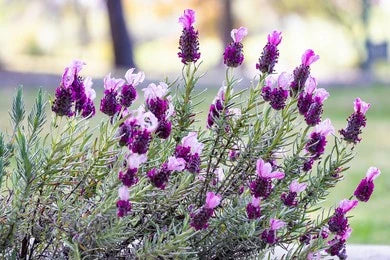Herbal remedies and dietary modifications are part of Ayurveda, which has been practiced extensively in India since ancient times. Ayurvedic treatment differs from patient to patient depending on the nature of the illness and the patient's state of health. It can be demonstrated to be helpful in a number of ways, including through panchakarma therapy, dietary adjustments, and yoga poses. Combining plants with metals, minerals, or jewels that fall under the category of Rasa shastra treatments and are applied in various forms, such as tablets, powder, or bhasmas, is known as herbal medicine. Ayurvedic remedies of all kinds are designed to strengthen and nourish the Dhatus while detoxifying the body and balancing all the doshas. We're going to talk about ustukhuddus, one of the best herbs mentioned in Ayurveda, in this article.
General Information
Because of its lovely blossoms and neat, compact growth habit, this flower is utilized as an ornamental all throughout the world. The Lamiaceae family is where this species is classified. It grows weakly throughout western India, mainly in regions with moderate coastal gradients. Its dried flowers can be found growing from the Bay of Bengal all the way to Mumbai. There are two types of this flower in India. In Hindi, this is widely referred to as dharu and alphajan; in English, it is called Arabic and French lavender. We obtain a fragrant oil with a reddish-yellow hue from its blossoms. This type of shrub is herbaceous and can reach heights of 12 to 36 inches.
Special Note About This Plant
- Dysmenorrhea and menstruation discomfort is treated with lavender.
- It has anti-inflammatory properties which help in bolstering the neurological system.
- It has a cardiac-tonic effect.
- It cures the vata-kapha diseases.
Systemic Classification
- Botanical Name - Lavandula stoechas
- Family - Lamiaceae
- Genus - Lavandula
- Species - L. stoechas
Habitat
- This evergreen shrub can reach a height of 12 to 36 inches.
- Its leaves measure 1 to 4 cm in length and have a purplish hue. They are followed by 5 cm long, ovoid-shaped bracts.
- The upper five teeth of this plant have an appendage that is fashioned like an incorrect heart.
- A faint, two-lipped crown forms above the plant, which can reach a maximum length of 8 mm.
- Its 2 cm long, pink to purple blooms emerge almost in late spring or early summer. The flowers are supported by a leafless stem that is about 10–30 cm long and 4–8 mm long.
Ayurvedic Properties
|
|
Hindi / Sanskrit |
English |
|
Rasa (Taste) |
Tikta, Katu |
Bitter, Pungent |
|
Guna (Physical Property) |
Teekshana, Rooksha |
Sharp, Dry |
|
Virya (Potency) |
Ushna |
Hot |
|
Vipaka (Post-Digestive Taste) |
Katu |
Pungent |
Effects On Doshas
- It balances the Vata and Kapha dosha
Practical Uses
- This herb is used to treat problems of the Kapha-Vata dosha.
- Applying this herb locally demonstrates its anti-inflammatory qualities.
- This herb is frequently employed in unani treatments to alleviate mental exhaustion, brain problems, and confusion over minor mental objects.
- When taken internally, this treats mental disability by enhancing memory retention, supporting the neurological system, and reducing discomfort and epileptic episodes.
- These qualities help in the management of joint pain, epilepsy, and stroke symptoms.
- It has hepatoprotective properties, and carminative actions, pacifies abdominal pain, and illuminates the digestive fire in the digestive tract.
- It exhibits cardiac-protecting characteristics in the circulatory system.
- It is used to soothe bronchial asthma, coughing, and pratishyaya (rhinitis) in the respiratory system. Its decoction is applied to certain circumstances to help relieve these illnesses.
- In addition to treating sinusitis, it also effectively regulates depression and anxiety.
Part used
Flowers and leaves
Dosage
You can utilize 3 to 6 grams of powder.

